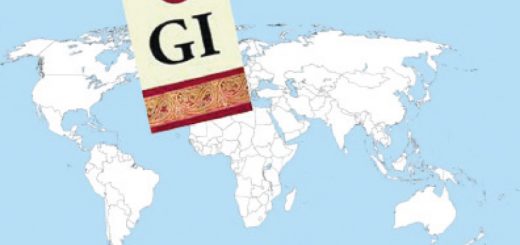What causes rogue waves?
Stories of rogue waves as big as 10-storey buildings appearing out of nowhere aren’t just fishy tales. But what causes these marine monsters remains unclear.
On 10 November 1975, while sailing on Lake Superior during a gale, the SS Edmund Fitzgerald sank in Canadian waters. At 220m long and 22m wide, this cargo ship was no minnow. But all 29 crew-members died without broadcasting a mayday and their bodies have never been recovered.
A US Coast Guard report claimed the tragedy was the crew’s fault for failing to secure covers on the huge hatches on top of the ship’s hold. But that conclusion has always been controversial; many fellow seafarers doubt the crew would have been so careless. And earlier this year, a documentary for the Discovery Channel, Dive Detectives, reached a different conclusion: that the Fitzgerald was unlucky enough to encounter a rogue wave – a wave so massive that it snapped the freighter in two while it was still on the surface.
Tall tales
Maritime history is filled with stories of monstrous waves that appear from nowhere. Legendary explorer Ernest Shackleton described an encounter with a huge wave during a voyage from Elephant Island in the Southern Ocean to South Georgia in the Atlantic in 1916. “It was a mighty upheaval of the ocean, a thing quite apart from the big, white-capped seas that had been our tireless enemies for many days. I shouted ‘For God’s sake, hold on! It’s got us!’” Somehow the boat survived, sagging and shuddering under the blow.
Despite such tales, the existence of sudden monster waves has always been greeted with a degree of scepticism. After all, even if your seafaring witness isn’t prone to the odd exaggeration, judging the height of a wave by eye is extremely difficult. But 1995 marks something of a watershed in the history of rogue waves. On 1 January, the Draupner oil platform in the North Sea off the coast of Norway experienced a 26m wave – that’s roughly the height of a 10-storey building. And this time, it wasn’t measured by eye, but by an on-board laser device. This giant was more than twice the size of the highest waves around.
Statistics show that such terrifying anomalies should only occur once every 10,000 years. But in 2001, two European Space Agency satellites were used to survey the oceans. During a three-week period, the MaxWave project detected no fewer than 10 giant waves, all of which were over 25m high.
“Over the centuries, stories of rogue waves emerged where there were survivors,” says Craig Smith, author of Extreme Waves. “But it’s hard to tell the height of objects at sea, so a lot of things were dismissed as sailors’ exaggerations. But since the MaxWave project, there’s been a flurry of meetings and technical conferences around the world where people have been trying to look at the mechanisms involved.” In other words, rogue waves have become a science.
The need to know
Revealing the mechanisms behind rogue waves isn’t simply a matter of academic interest. “What’s surprising is that 50-100 ships go down every year. Of course, that isn’t all down to large waves, but a good fraction of it is and we rarely hear about that,” says Smith.
But researching these waves is frustratingly difficult – getting the right data being the fundamental problem. Wave researcher Professor Efim Pelinovsky at the Institute of Applied Physics in Russia is someone who knows that all too well.
Prof Pelinovsky collects data from North Sea oil platforms – when the companies are prepared to give it to him. Even then it’s not that simple. “We can’t reconstruct the history of the rogue wave because we have no measurements within a mile of the platform,” he says. As well as being huge, rogue waves are also fleeting, lasting just one or two minutes. So the chances of even capturing one on an oil platform’s sensor or a sensor-carrying buoy are slim to say the least. Another physicist, Eric Heller at Harvard University, says wave tanks don’t offer much help either. “You can create eddies and waves in a tank, but it would have to be pretty big to have enough eddies and a long enough run to see the effects you want to see. You might think, ‘well why not use shorter waves in a smaller tank?’ But then the capillary effect, the surface tension of the water, starts to dominate.”
As such, Pelinovsky collects data on rogue waves from wherever he can. “We look at anything that’s available,” he says. “We try to process all the information from newspapers as well as the BBC and CNN.”
But it’s here that a little scepticism comes in handy again. “In the media any big wave gets called a rogue,” says Chris Garrett, an oceanographer at the University of Victoria in Canada. “I’m sure you’ll have seen headlines like ‘cruise ship gets hit by rogue wave’. Well, the cruise ship was probably just in a place where it was extremely rough anyway.” The thing is, a rogue wave isn’t simply a big wave, like you’d get in any storm. It’s one that’s ‘freakishly’ big, towering above any of its neighbours.
The rather more precise, scientific, definition is a wave whose height is more than twice the significant wave height (the significant wave height being the mean of the largest third of waves). And it’s this ‘freakishness’ that makes them so dangerous. “Sometimes we have hurricanes and typhoons, but there are no rogue waves because all of the waves are very high,” says Pelinovsky. “It’s more important for us to look at waves that are two or even three times the size of the background waves. ”
If data’s scarce and wave tanks don’t offer much help, then surely the best approach is to determine where they’re most likely to occur and dip your instruments into the water there. And if there’s a world capital of freak waves, then that dubious honour has to go to the treacherous waters off Cape Agulhas, a rocky headland in South Africa. Here the waters at the meeting point of the Indian and Atlantic oceans have claimed a huge number of vessels and terrifying 30m walls of water have been reported.
Missing factors
Off Cape Agulhas, strong winds known as the Roaring Forties blow from east to west, producing waves that travel in the same direction. These then meet the Agulhas current running in the opposite direction. And it’s this clash, that’s thought to spawn rogue waves. But conflict between waves and a powerful current can’t be behind all rogue waves, as it’s a combination that’s not found at all locations where rogues have been confirmed.
In their quest for answers, physicists have found an excellent substitute for water – electromagnetic radiation.
Microwaves and light are waves and behave in a strikingly similar way to their counterparts in the sea. In one study, involving Heller at Harvard and researchers at the University of Marburg in Germany, microwaves were fired into a cavity inside two metal plates. Random currents in the sea were simulated by placing metal cones in random positions in the cavity. The team found that microwave hotspots emerged in the cavity and these ‘freak microwaves’ cropped up far more often than expected.
What it showed was that even in the chaotic conditions of the sea, with random currents and waves coming from more than one direction, the currents can still act like a lens, focusing the waves to produce larger rogues.
Advances in imaging technology are also allowing this to be studied in more detail. During the MaxWave project, the satellites were relatively ‘blunt’ wave-watching instruments. But today, the techniques have been honed, so the oceans can be studied in much greater detail (see ‘Wave hunting from space’, left). Dr Susanne Lehner, at the German Aerospace Centre, was instrumental in developing the techniques used to measure wave heights from radar data. “We could only observe wavelengths longer than 200m. Now we have much better resolution and can see how they are breaking and interacting with currents.”
When he’s not being a physicist at Harvard, Heller is sailing his 40ft yacht along the west coast of Canada up towards Alaska – an area he describes as having “lots of currents and lots of waves”. So, to him, the need for a clearer understanding of rogue waves is obvious. “We’d like to say that one day there’ll be a marine weather forecast that speaks of the probability of freak waves. But they will always be a statistical event, they’ll never be a certainty.” And our new knowledge of how ferocious the sea can be is prompting research into boat design.
But are rogue waves frequent enough to warrant this kind of forecast – just like you’d have for other sailing conditions? “I think they are devastating enough that you’d like one,” says Heller. “But whether it would actually affect a ship captain’s decision to go somewhere, I don’t know. The wind and rain are the same – people go out anyway, but you’d like to know if they’re likely and if you should wear a coat that day or not.”
adopted from FOCUS magazine
















Recent Comments